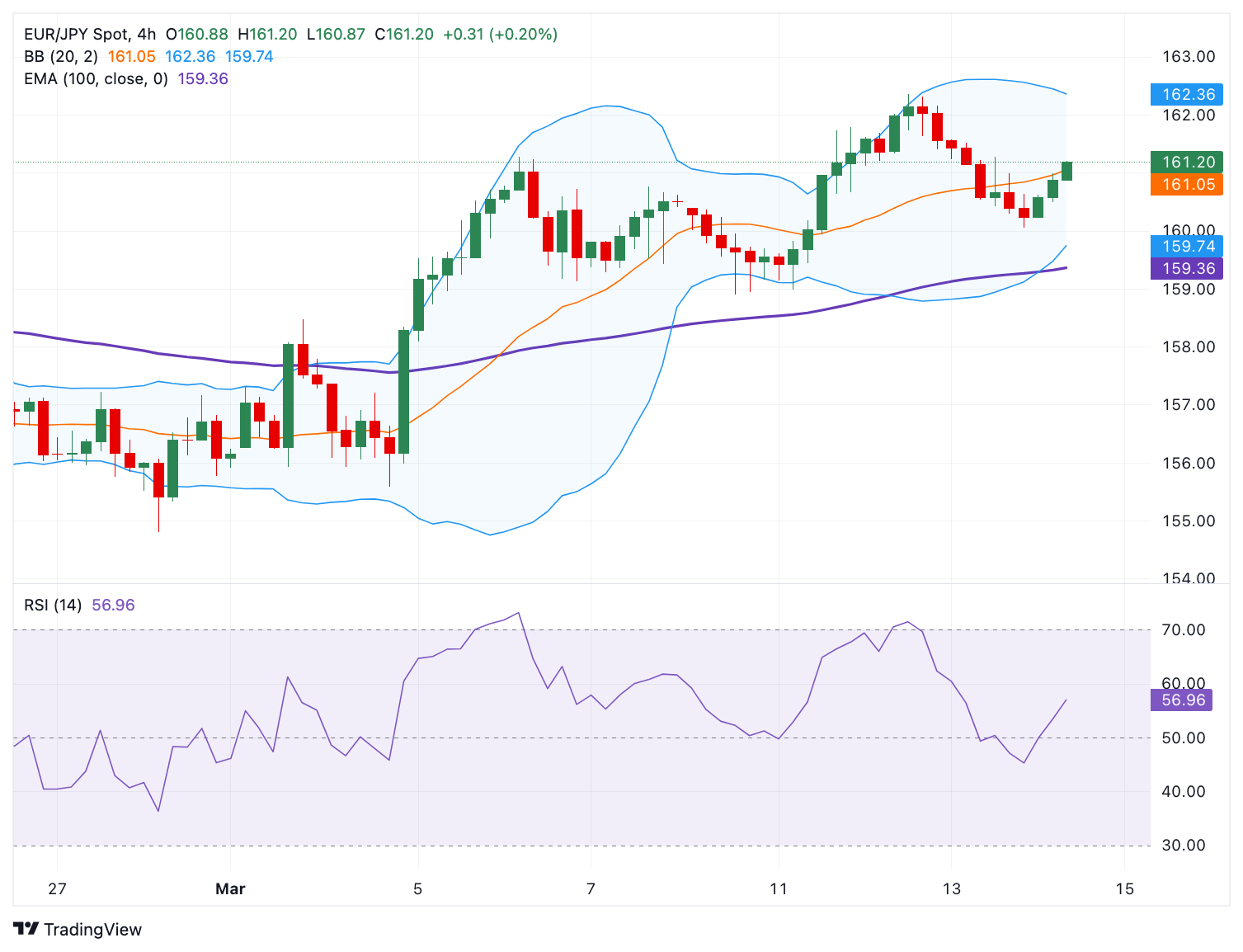Our best spreads and conditions
 About platform
About platform
The EUR/JPY cross gains traction to around 161.10 during the early European trading hours on Friday. The Japanese Yen (JPY) softens against the Euro (EUR) on a positive tone around the equity markets and improved risk sentiment. Furthermore, a source familiar with the Bank of Japan's (BoJ) thinking noted that rising global uncertainty could affect the rate-hike timing. This, in turn, contributes to the JPY’s downside and creates a tailwind for EUR/JPY.
Technically, the bullish outlook of EUR/JPY remains in play, with the cross holding above the key 100-period Exponential Moving Average (EMA) on the daily chart. Further upside cannot be ruled out as the 14-day Relative Strength Index (RSI) stands above the midline around 56.0.
In the bullish case, the key resistance level for the cross is located near 162.35, representing the upper boundary of the Bollinger Band and the high of March 12. Sustained trading above this level could attract some buyers to 162.70, the high of January 28. Further north, the next hurdle is seen at 163.22, the high of January 22.
On the downside, the low of March 13 and the psychological level in the 160.05160.00 zone act as a crucial support level for the cross. Extended losses could see a drop to the lower limit of the Bollinger Band at 159.75. A decisive break below the mentioned level could pave the way to 159.35, the 100-period EMA.

The Japanese Yen (JPY) is one of the world’s most traded currencies. Its value is broadly determined by the performance of the Japanese economy, but more specifically by the Bank of Japan’s policy, the differential between Japanese and US bond yields, or risk sentiment among traders, among other factors.
One of the Bank of Japan’s mandates is currency control, so its moves are key for the Yen. The BoJ has directly intervened in currency markets sometimes, generally to lower the value of the Yen, although it refrains from doing it often due to political concerns of its main trading partners. The BoJ ultra-loose monetary policy between 2013 and 2024 caused the Yen to depreciate against its main currency peers due to an increasing policy divergence between the Bank of Japan and other main central banks. More recently, the gradually unwinding of this ultra-loose policy has given some support to the Yen.
Over the last decade, the BoJ’s stance of sticking to ultra-loose monetary policy has led to a widening policy divergence with other central banks, particularly with the US Federal Reserve. This supported a widening of the differential between the 10-year US and Japanese bonds, which favored the US Dollar against the Japanese Yen. The BoJ decision in 2024 to gradually abandon the ultra-loose policy, coupled with interest-rate cuts in other major central banks, is narrowing this differential.
The Japanese Yen is often seen as a safe-haven investment. This means that in times of market stress, investors are more likely to put their money in the Japanese currency due to its supposed reliability and stability. Turbulent times are likely to strengthen the Yen’s value against other currencies seen as more risky to invest in.